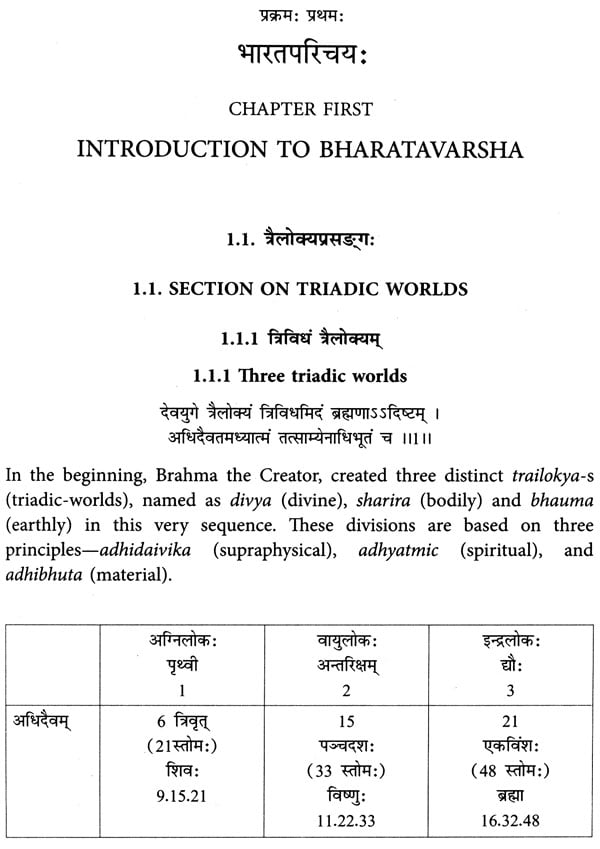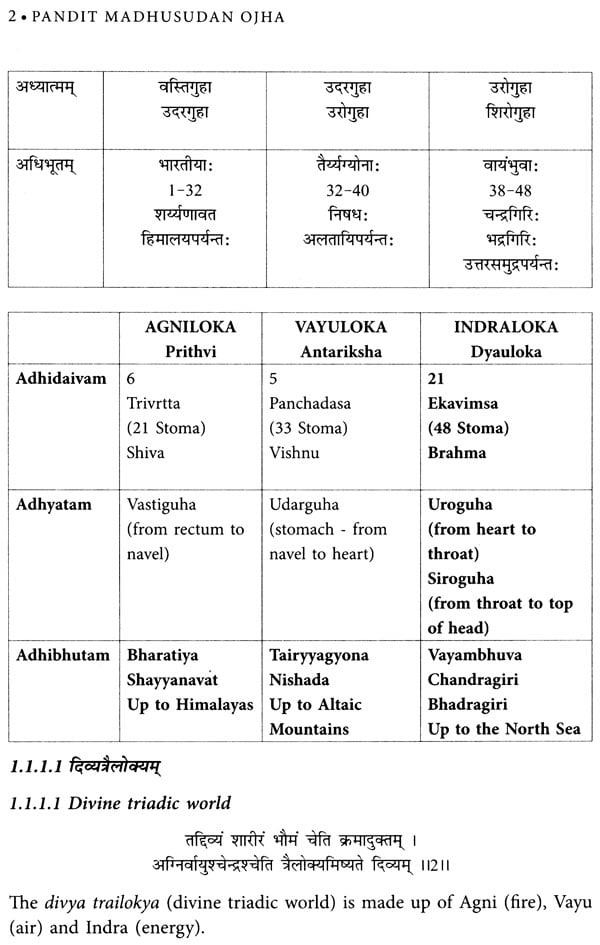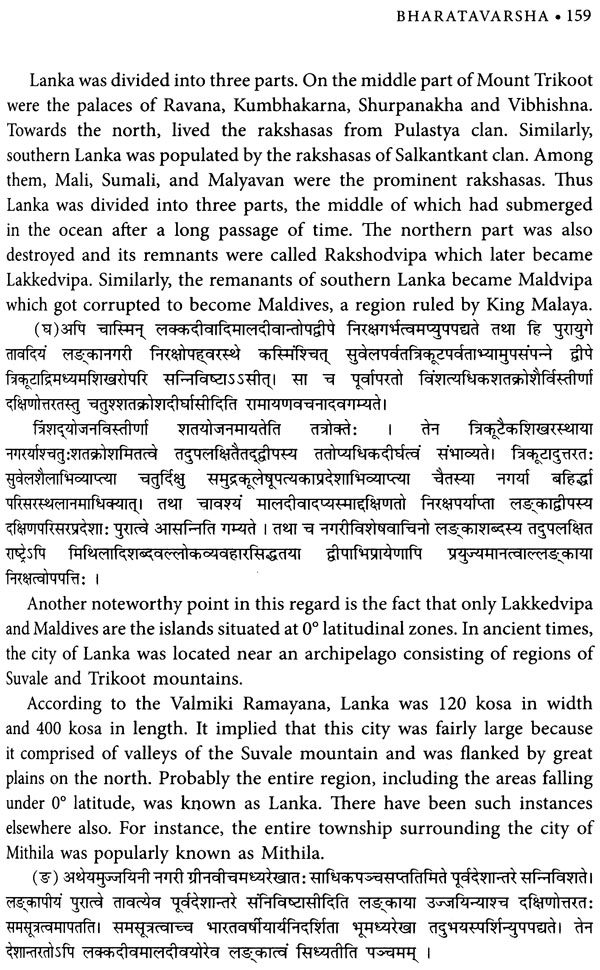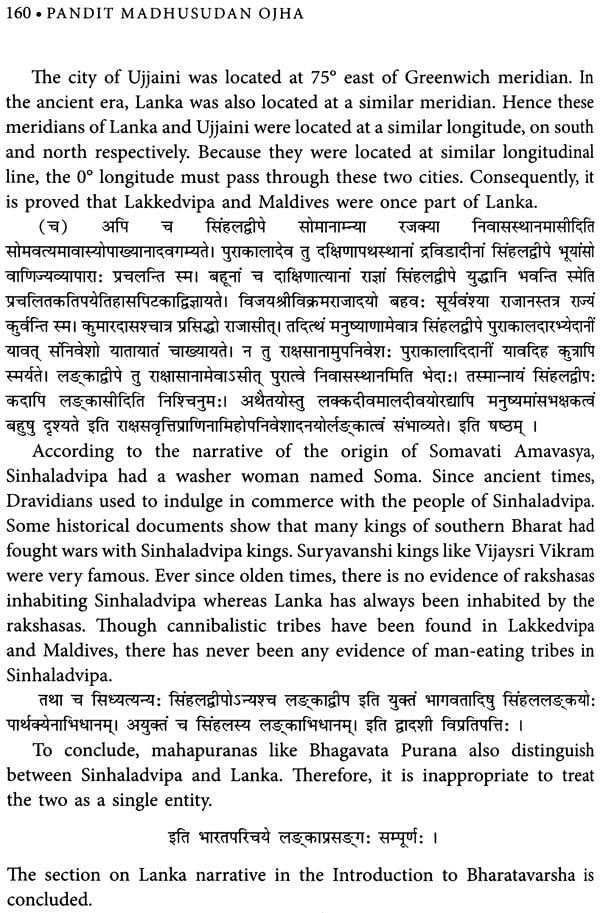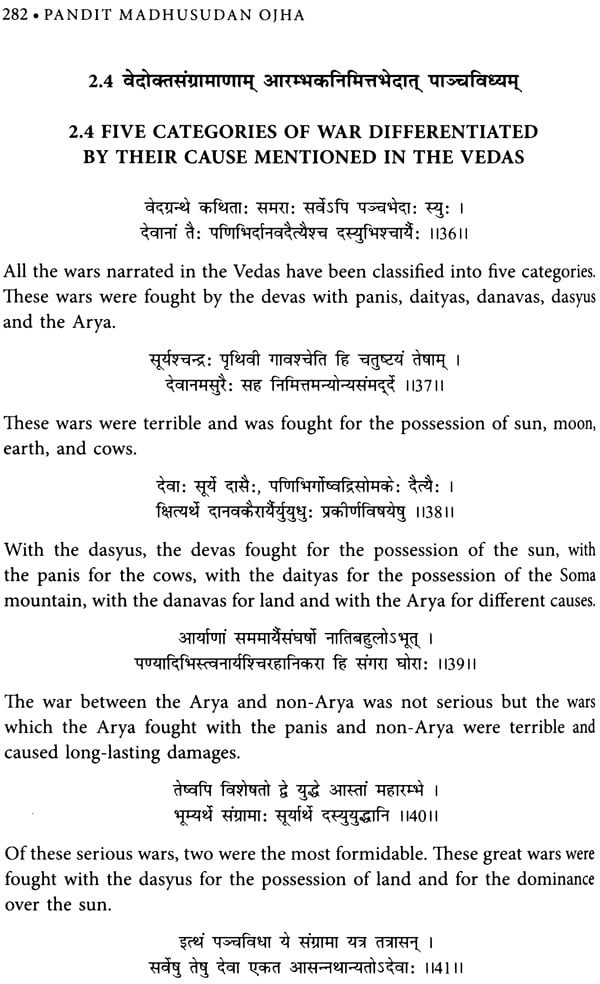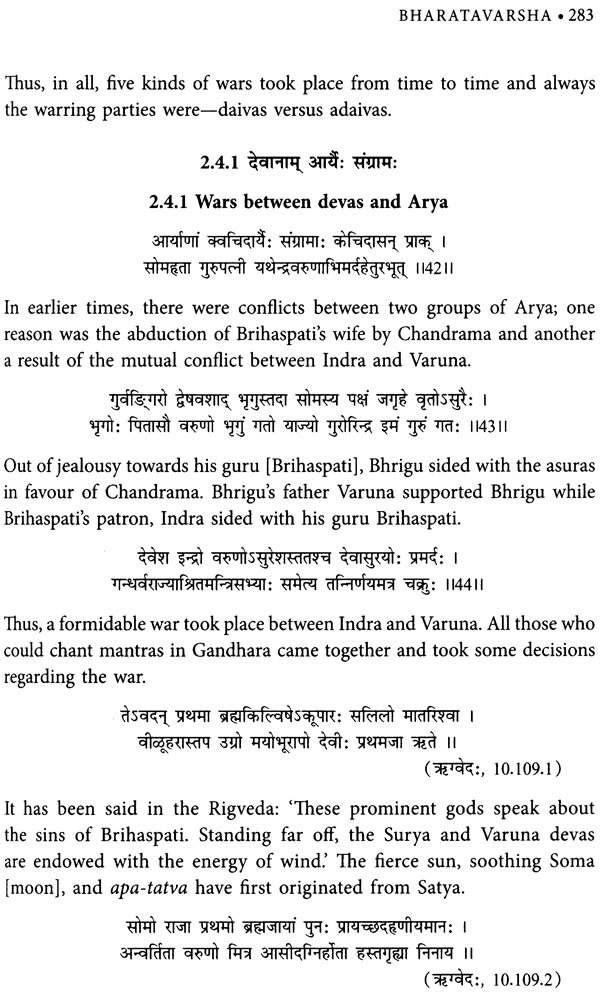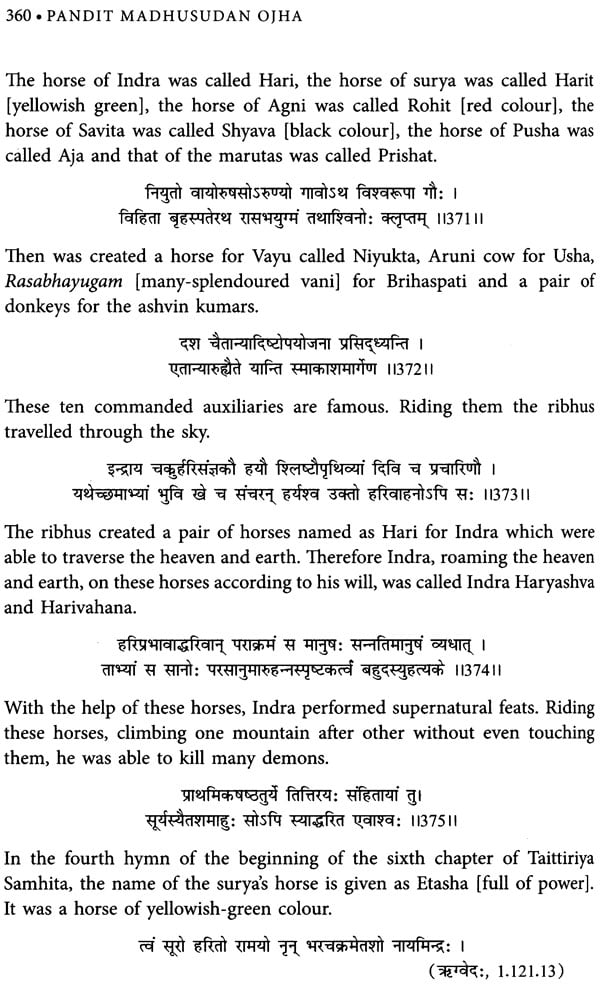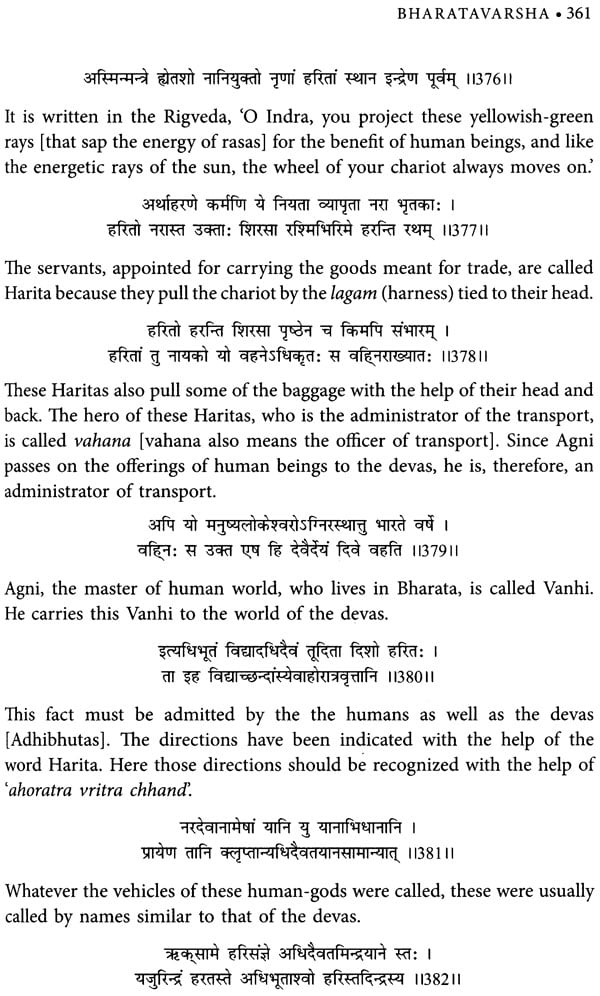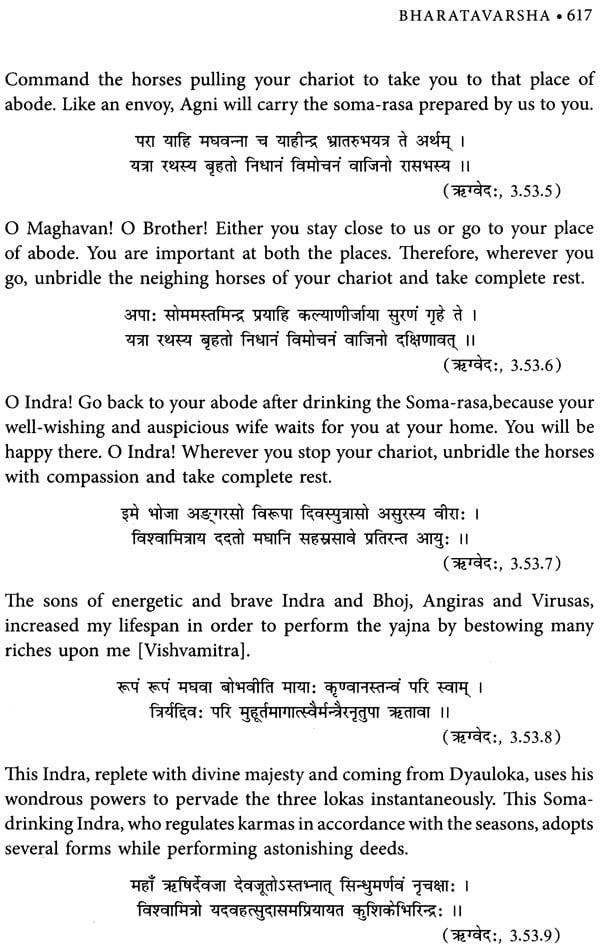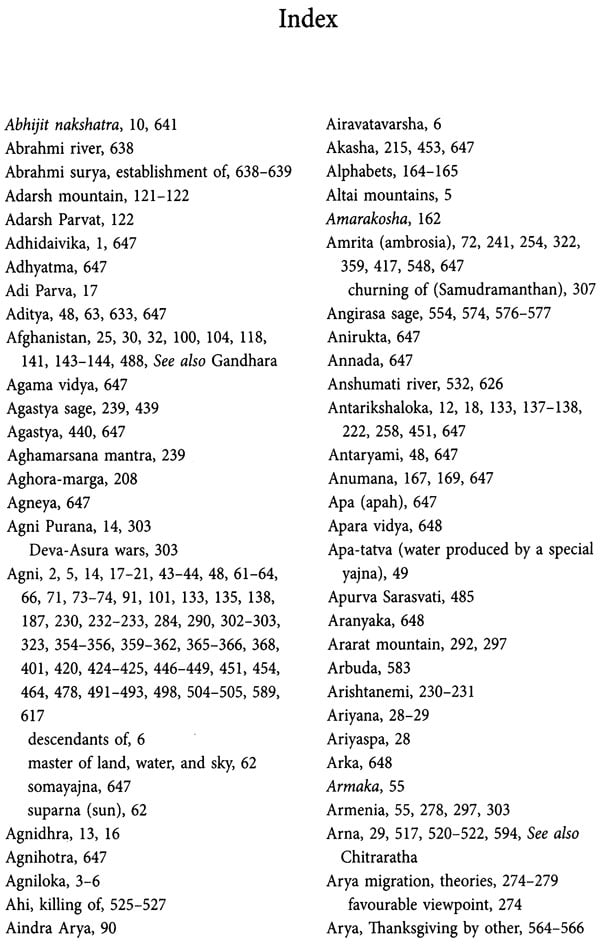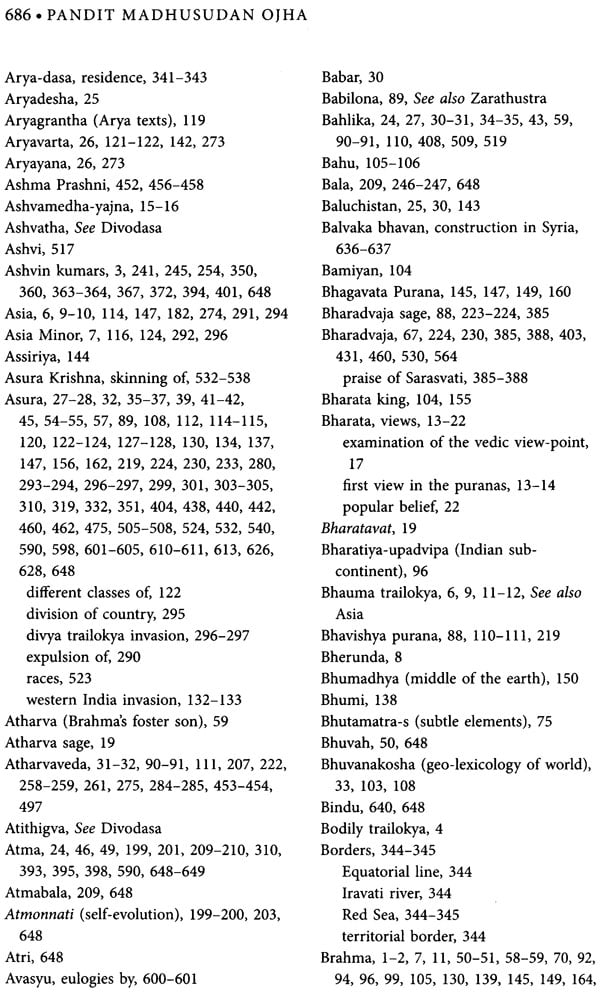
Bharatavarsha The India Narrative as Told in Indravijayah
Book Specification
| Item Code: | NAN499 |
| Author: | Prof. Kapil Kapoor |
| Publisher: | Rupa Publication Pvt. Ltd. |
| Language: | English |
| Edition: | 2017 |
| ISBN: | 9788129149138 |
| Pages: | 717 |
| Cover: | Hardcover |
| Other Details | 9.5 inch X 6.5 inch |
| Weight | 900 gm |
Book Description
Bharatavarsha was not confined to political borders.
It was a vast region, stretching from the Red Sea in the west to the China Sea in the east. Here, the principles of life and learning evolved by seer-scientists (rishis) held sway.
In the forces of nature, like Indra, these seer-scientists discovered enigmatic clues to the process of Creation, and acquired profound knowledge of earth, interspace and heaven.
Here scripts, languages, poetry, music, philosophy and the art of warfare evolved along with several hundred unique art and craft forms.
The place, nourished by great rivers like Sindhu, Sarasvati and Ganga, where the seers lived, learnt and taught, was Bharatavarsha.
Delving deep into the ocean of Vedic wisdom, Pandit Madhusudan Ojha has created this magnificent chronicle.
On first reading, this is the story of how Bharatavarsha came into being. But more than that, it is the story of Bharata-in the configuration of the continents, the world's peoples, and their location in the brahmanda. It is thus a fascinating account of how a vast geographical expanse is integrated by cosmic awareness. Rivers and mountains criss-cross the landscape of this dramatic story, livened up by great colorful races and individuals.
Equally important is the search for answers to the ancient, profound questions. Which of the known Bharatas is the Bharata in Bharatavarsha? How far did Bharatavarsha extend? What was the Suryasadana or solar observatory? How many siddhis and vidyas were there to learn which we seem to have lost now? What are the cosmic entities? How many worlds are there? What are the key forces of nature? How do these forces exist externally as well as within living beings? What is jnana? What is vijnana? What is the connotation and denotation of the word 'Veda'?
Throughout the book run such investigations of profound questions and the answers are sought in ancient texts-the search illuminated along the way by sparks of surprising insights.
VIDYAVACHASPATI PANDIT MADHUSUDAN OJHA (1866-1939) was an illustrious scholar of the Vedas. His lifelong devotion and profound scholarship in pursuing Veda Vijnana led not only to the revival of the Vedic studies in its true spirit, but also cleared many myths and misleading theories surrounding the ancient texts.
KAPIL KAPOOR, a well-known scholar of linguistics and literature, has translated lndrvaijayah from Sanskrit into English. He is currently the Chancellor of Mahatma Gandhi International Hindi University, Wardha, and Chairman, India Policy Foundation, New Delhi.
WILSON JOHN works as an editor with Shri Shankar Shikshayatan. He has, in the past, worked as a journalist with The Hindustan Times and The Pioneer.
Shri Shankar Shikshayatan Trust is happy to present its first publication, Bharatavarsha: The India Narrative, an English translation of Indravijayah, an extraordinary work of Vedic scholarship, by an eminent scholar of the Vedas, Pandit Madhusudan Ojha (1866-1939).
The credit for making Pandit Ojha and his works (sixty-six published volumes in all) known to the English-speaking world should go to Rishi Kumar Mishra (1932-2009), a man of letters and learning in his own right. Shri Shankar Shikshayatan was set up by him to fulfil the promise he made to his guru, Pandit Motilal Shastri (1908-1960), to propagate Veda Vijnana, which can be broadly translated as Vedic Science. Shastriji was an illustrious disciple of Pandit Madhusudan Ojha.
Mishraji, the author of five illuminating volumes on the Vedas, chose Indravijayah as the first work by Ojhaji to be translated into English. There were a few important reasons for this decision. The most persuasive one was Pandit Ojha’s reaffirmation of the Vedas and other related ancient texts as convincing reference points of history and geography. His lucid portrayal of the erstwhile Bharatavarsha and the progress made in the fields of science, linguistics, and other forms of knowledge based on a wide variety of sources, including the Vedas, Puranas, Ramayana, Mahabharata and other ancient texts, is remarkable.
There are indeed brave and contentious assertions made in this volume which will open up discussions which, if done in a spirit of free enquiry, can offer an insight into several facets of those ancient times. It is equally important to keep in mind the era covered in the book and the period in which Pandit Ojhaji wrote Indravijayah.
No word of thanks would suffice in expressing our gratitude to Professor Kapil Kapoor, an eminent scholar of linguistics, for translating Indravijayah. It has been a task requiring passion, patience and rigour.
Work of this character and magnitude would not have been possible without the help of countless people. Shri Shankar Shikshayatan Trust acknowledges with gratitude all those who gave their time and advice generously in the making of this volume. Three persons need to be specifically acknowledged and thanked-Dr Santosh Kumar Shukla, an Associate Professor of Sanskrit Studies at Jawaharlal Nehru University, a scholar who is wise beyond his years; Dr Lakshmi Kant Vimal at Shri Shankar Shikshayatan, who shepherded the tedious and tiresome process of putting such a complex work to print; and Dr Mani Shankar Dwivedi who helped with the bibliography.
No less grateful are we to Rupa Publications, Mr R.K. Mehra and Mr Kapish Mehra, and their team of editors for their unstinting support in the publication of Bharatavarsha: The India Narrative.
Bharatavarsha: The India Narrative is the English translation of an extraordinary work of scholarship in Sanskrit, Indravijayah or 'Indras victory', authored by an equally remarkable Vedic scholar and orator, Pandit Madhusudan Ojha.
Pandit Madhusudan Ojha (1866-1939) was in many senses a pioneering man of words and wisdom, reigniting an interest in the study of Vedas and other Pauranic texts at a time when western mode of education had swept aside traditional learning and teaching in India.
Blessed with worthy teachers in Pandit Rajiv Lochan Ojha, his uncle, and Pandit Shiv Kumar Shastri, a renowned Vedic scholar of Kashi, Pandit Ojha recognized that the reading and understanding of Vedas would require rediscovering the meaning and context of the Vedic language, lost due to neglect and disaffection over the centuries. Distortions and misinterpretations had besmirched the true meaning of Vedic terminologies. These had to be corrected, he realized, to revive a deeper study of the Vedas in India. This became his life's mission.
A lifelong study of the Vedas along with other Pauranic texts made Pandit Ojha aware of an exceptional blend of reasoning based on natural principles and introspective insight in these texts. He discovered in the Vedas a living science, Vedic Vijnana, the key to unlock the profound mysteries of Creation, and life.
Indravijayah is one of his over 228 volumes written on various aspects of Vedic Vijnana which evidently has survived decades of neglect. The present volume is an endeavour by Shri Shankar Shikshayatan to foreground not only the extraordinary interpretive talent and scholarship of Pandit Madhusudan Ojha but also his remarkable contribution towards reviving an interest in the study of the Vedas.
Bharatavarsha: The India Narrative may not capture in entirety the magnificence and depth of knowledge contained in the original work of Pandit Madhusudan Ojha, but it certainly does open a beguiling window to the mysteries of life and Creation through the absorbing tale of Indra, a divine personification of a supraphysical energy, and his exploits of courage and dominance.
At the surface level, this book is a simple tale of Indra, a mighty and brave warrior armed with a vajra, who is also the lord of the heavens and light, and the devas.
Located within this adventurous tale of Indras war and peace is the story of Bharatavarsha, a playground of the devas and asuras, where new cultures, new languages and the manushyaloka itihasa (history of the human world) took seed and flourished.
A substantial part of this book deals with the geographical contours of Bharatavarsha and its many facets which have hitherto remained undiscovered. Herein, Pandit Ojha, digging deep into the Vedas, Puranas and other important texts, has constructed a vigorously argued framework of reference points that steadily build the story of Bharatavarsha.
More important than the range and extant of information are the remarkably 'new' definitions and interpretations that Pandit Ojha has laid down in Indravijayah to dispel what he calls the numerous bhrantiyan (mistaken assumptions) about Bharata, which in fact is an entity much larger than what we understand today.
Bharatavarsha: The India Narrative is not limited to mapping the contours of a country-it constructs a composite image of the people and their culture in the Vedic period. It expounds on the principles of dharma, a way of life governed by ethics and duty, points to the origin of script and the evolution of languages, elucidates on the development of a solarium or observatory to study various facets of the sun, and enumerates in some detail various arts, skills, and accomplishments of the people.
Pandit Ojha's reliance on Rigveda as a principle source of history of Bharatavarsha has been a bold and controversial pursuit. There has been a traditional divide among scholars about Rigveda-majority of them believe that it is a work of divinity and cannot therefore be used as a reference point for studying mundane subjects like history or geography. They believe that names mentioned in the Vedas have to be read as pratik-s (symbols); their contention is that any resemblance to real people, places, and events is coincidence. Others, in minority, aver that each hymn is attributed to a rishi and hence is not 'divine' in nature but very human, and therefore contain narratives of what actually happened or had existed.
Pandit Ojha, on his part, has adopted a unique position-a middle path, arguing that while Rigveda is apaurusheya (not of human origin) but its epistemology is alaukika-pratyaksha (extraordinary direct perception) of drashta-s (seers), and therefore its encryption and expression, is human. Rigveda, he argued, could hence be used as a valuable reference point to map the history and geography of the land in ancient times.
It is evidently not an easy task to decode the complex nature of language, the sandhya-bhasha as it is called, or its encoded knowledge which Adi Shankaracharya called apara vidya, and draw out information about people, places, and events of an ancient age. The language of the Vedas is metaphoric, on the authority of Samkhya Darshana, and replete with symbols and allusions. It is Pandit Ojha's astounding scholarship and sharp reasoning which made it possible for him to interpret in human terms a repository of brahma-jnana (transcendental knowledge), beginning with the knowledge of Creation itself.
The English version of the work, Bharatavarsha: The India Narrative, follows the same structure as laid down by Pandit Ojha in Indravijayah where he articulated his findings about various aspects of Creation, cosmos, nature, human history, and geographical details. The book has five prakarana-s (chapters). These are further divided into prasanga-s (sub-sections).
The book opens with a grand sweep of Creation, illuminating in the process the existence of three triadic worlds representing Creation in all its manifestations. These worlds transcend barriers of time and space, existing as much within as outside. The prithvi (earth) is a part of these triadic worlds and within prithvi, similar triadic worlds exist.
The three geographic regions on prithvi have three presiding deities- Indra, the god of light, Vayu, the god of wind, and Agni, the god of fire. These distinctions are a classic mode of marking the climate of the three regions from north to south-the ice cold Siberian and Tundra regions, the windswept central Asia that includes Mongolia and China and the hot plains of Bharatavarsha.
Pandit Ojha applies these three divisions to the sharira (physical body) as well-from the head to the heart is denoted as divya (divine), from heart to the navel is antariksha (interspace) and from the navel to the lower organs constitute bhauma (earthly). Construction of this powerful ontology must be counted as one of Pandit Ojhas stellar achievements in this book.
This section is followed by a detailed presentation of proofs to establish the territorial boundaries of Bharatavarsha and the etymology of its name as found in the Vedas and Puranas. These sections are descriptive and make a convincing argument about the expanse of Bharatavarsha-'From the Eastern China Sea to the Red Sea in the West: This almost approximates the dimensions in Ptolemy's First century CE map of India.
The fifth section offers a new interpretation of the names given to Sri Lanka, Maldives, and Lakshadweep Islands. Citing references from the Ramayana, and corroborating it with the latitudes and longitudes of given places, the book argues that 'Sinhaladvipa' and 'Lankadvipa' referred to the present day Lakshadweep and Maldives and not to Sri Lanka. It is 'Sinhala' which is the modern Sri Lanka, whose language is still known as the 'Sinhalese'. These assertions, cogently argued, call for serious reflection.
Contents
| Preface | vii | |
| Introduction | ix | |
| Chapter I | Introduction to Bharatavarsha | 1 |
| Chapter II | The Arya-Dasa Conflict | 273 |
| Chapter III | Scientific Institution | 381 |
| Chapter IV | Subjugation of Dasyus | 459 |
| Chapter V | Felicitation of Victorious Indra | 545 |
| Glossary | 647 | |
| Cited Work | 653 | |
| Bibliography | 654 | |
| Verse Index | 663 | |
| Index | 685 | |
| Pandit Madhusudhan Ojha | 700 | |
| About Shri Shankar Shikshayatan | 701 | |
| Translator's Acknowledgments | 702 |
